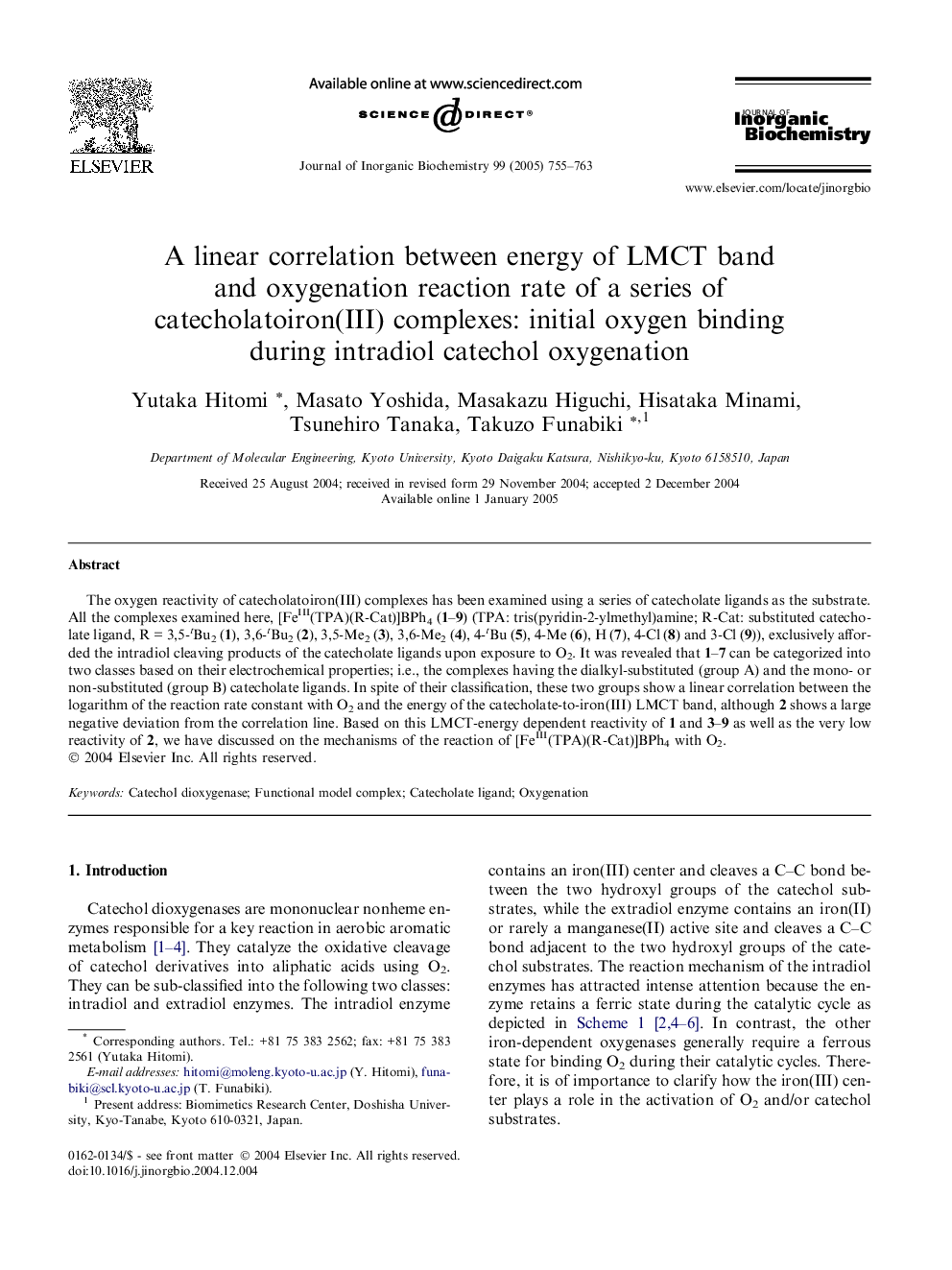| Article ID | Journal | Published Year | Pages | File Type |
|---|---|---|---|---|
| 10573986 | Journal of Inorganic Biochemistry | 2005 | 9 Pages |
Abstract
The oxygen reactivity of catecholatoiron(III) complexes has been examined using a series of catecholate ligands as the substrate. All the complexes examined here, [FeIII(TPA)(R-Cat)]BPh4 (1-9) (TPA: tris(pyridin-2-ylmethyl)amine; R-Cat: substituted catecholate ligand, RÂ =Â 3,5-tBu2 (1), 3,6-tBu2 (2), 3,5-Me2 (3), 3,6-Me2 (4), 4-tBu (5), 4-Me (6), H (7), 4-Cl (8) and 3-Cl (9)), exclusively afforded the intradiol cleaving products of the catecholate ligands upon exposure to O2. It was revealed that 1-7 can be categorized into two classes based on their electrochemical properties; i.e., the complexes having the dialkyl-substituted (group A) and the mono- or non-substituted (group B) catecholate ligands. In spite of their classification, these two groups show a linear correlation between the logarithm of the reaction rate constant with O2 and the energy of the catecholate-to-iron(III) LMCT band, although 2 shows a large negative deviation from the correlation line. Based on this LMCT-energy dependent reactivity of 1 and 3-9 as well as the very low reactivity of 2, we have discussed on the mechanisms of the reaction of [FeIII(TPA)(R-Cat)]BPh4 with O2.
Keywords
Related Topics
Physical Sciences and Engineering
Chemistry
Inorganic Chemistry
Authors
Yutaka Hitomi, Masato Yoshida, Masakazu Higuchi, Hisataka Minami, Tsunehiro Tanaka, Takuzo Funabiki,
